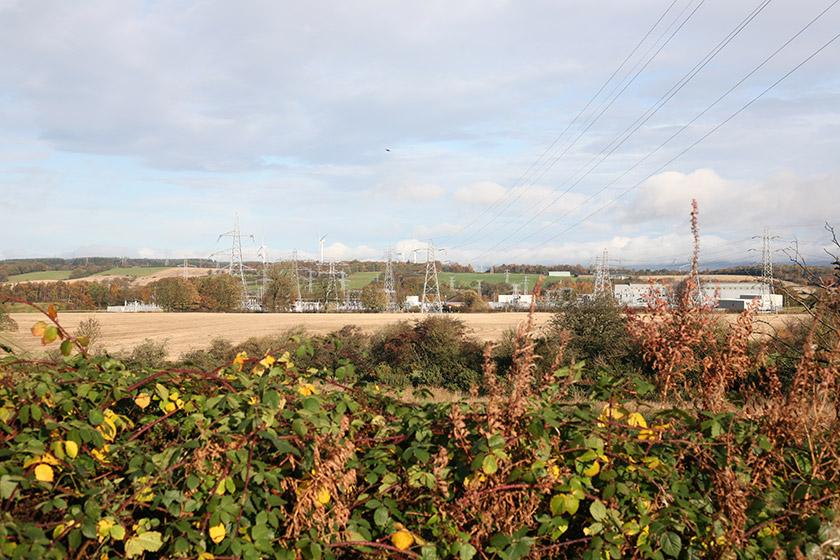The Denny to Wishaw Network Upgrade Project includes new infrastructure as well as some changes and reinforcements to existing infrastructure. This includes:

Above: Existing Bonnybridge 132kV and 275kV substations
- Construction of a new double circuit 275kV / 400kV overhead line, running north-south from Bonnybridge 275kV substation to a point near Glenmavis in North Lanarkshire, where it will connect to the existing 275kV overhead line (known as XX Route) that runs between the Easterhouse and Newarthill 275kV substations;
- A ‘spur’ from the new overhead line to Cumbernauld substation (approximately 750m), and removal of the existing 11km 132kV overhead line (CB route) between Bonnybridge and Cumbernauld substations;
- Extending existing substations at Bonnybridge, Denny North, Cumbernauld, Wishaw and Easterhouse to install additional electrical equipment and carry out associated landscaping, drainage, access and fencing works where required;
- Installing new transformers at Bonnybridge and Cumbernauld substations;
- Replacing the conductors (wires) and associated equipment on existing overhead lines to operate them at 400kV, as follows:
- Newarthill to Wishaw (XR route) – 16km
- Newarthill to Easterhouse (XX route) – 15.4km
- Denny North to Bonnybridge (ZG route) – 4km
- Alterations to the overhead lines where they enter the substations (to connect them to the new equipment)
- Moving the existing XX overhead line further away from residential properties at Grantown Gardens, Glenmavis, through a new ‘tee-in’ arrangement to the proposed new overhead line
- Undergrounding of two sections of the existing 132kV overhead line (AA route) between Bonnybridge and Bathgate, where it is crossed by the proposed new overhead line
The new overhead line will be carried on lattice towers (pylons), made of galvanised steel. They are grey in colour and become duller in appearance after about 18 months.
The towers will have three arms on each side, and each arm will carry a set of conductors (wires).
This is because there will be a circuit on each side of the towers, and each circuit has three sets of wires.
The towers have a standard height of 46 metres but can go up to 63 metres where required to ensure electrical safety clearance to the ground. They are usually about 300 metres apart, but the exact distance between them will vary depending on the landscape and any obstacles such as roads, rivers and railway lines.
You can find maps and plans of our proposals for the overhead lines and substation extensions in the Project Documents section of this website.